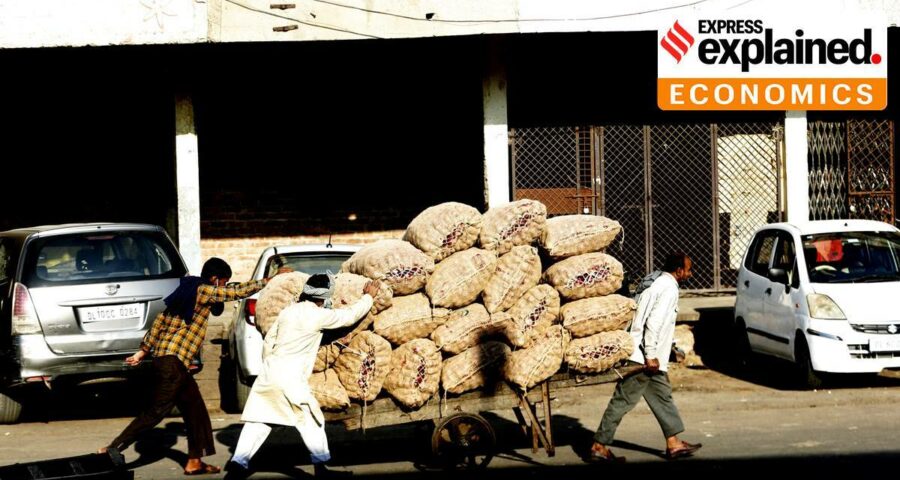The WPI data comes right after the retail (CPI) inflation scaled a four-month peak of 5.52 per cent in March.
Get email alerts for your favourite author. Sign up here
Wholesale-level inflation — measured by the WPI or the wholesale price index — shot up to 7.39 per cent in March on a year-on-year basis. This is the highest wholesale inflation rate since October 2012, and was driven largely by higher prices of crude oil and a surge in price levels of food items such as pulses and fruits.
The surge in March was also aided by a low base in the corresponding month of 2020.
Newsletter | Click to get the day’s best explainers in your inbox
The WPI constituents
While the Consumer Price Index-based retail inflation — the more widely tracked policy tool — looks at the price at which the consumer buys goods, the WPI tracks prices at the wholesale, or factory gate/mandi levels. Between the wholesale price and the retail price, the difference essentially is the former only tracks basic prices devoid of transportation cost, taxes and the retail margin etc. And that WPI pertains to only goods, not services.
So, the WPI basically captures the average movement of wholesale prices of goods and is primarily used as a GDP deflator (the ratio of the value of goods an economy produces in a particular year at current prices to that of prices that prevailed during the base year).
📣 JOIN NOW 📣: The Express Explained Telegram Channel
The surge and its relevance
Two main reasons. The WPI data comes right after the retail (CPI) inflation scaled a four-month peak of 5.52 per cent in March. In recent years, the WPI and CPI have shown a degree of dissonance, given that the WPI has a higher weight of manufactured goods and the CPI has a greater constitution of food items. The convergence of sorts in March is a warning sign, given that a higher print of both indices portends an economic phenomenon of too much money chasing too few goods and services.
Two, there are concerns that the higher inflation on the wholesale side could eventually spill over to the retail level in the following months, especially if the new lockdowns and restrictions hit supply chains.
Although WPI numbers are not the RBI’s main metric for the purpose of setting monetary policy, the sharp spike in March could dissuade the Monetary Policy Committee from looking at rate cuts well into the future, even as yet another economic disruption looms large due to the Covid caseload surge. More disruptions could translate into higher inflationary expectations.
Source: Read Full Article



